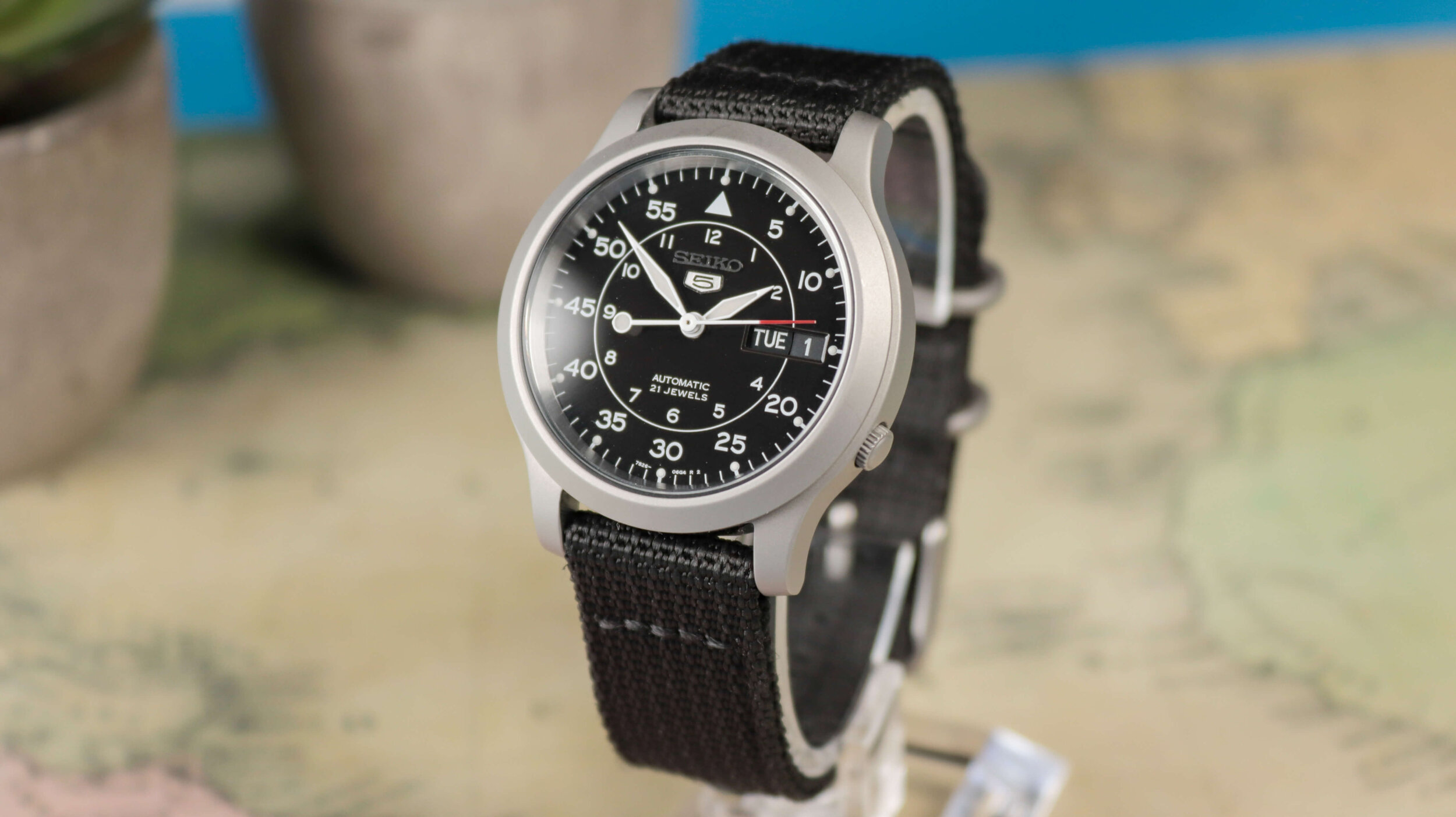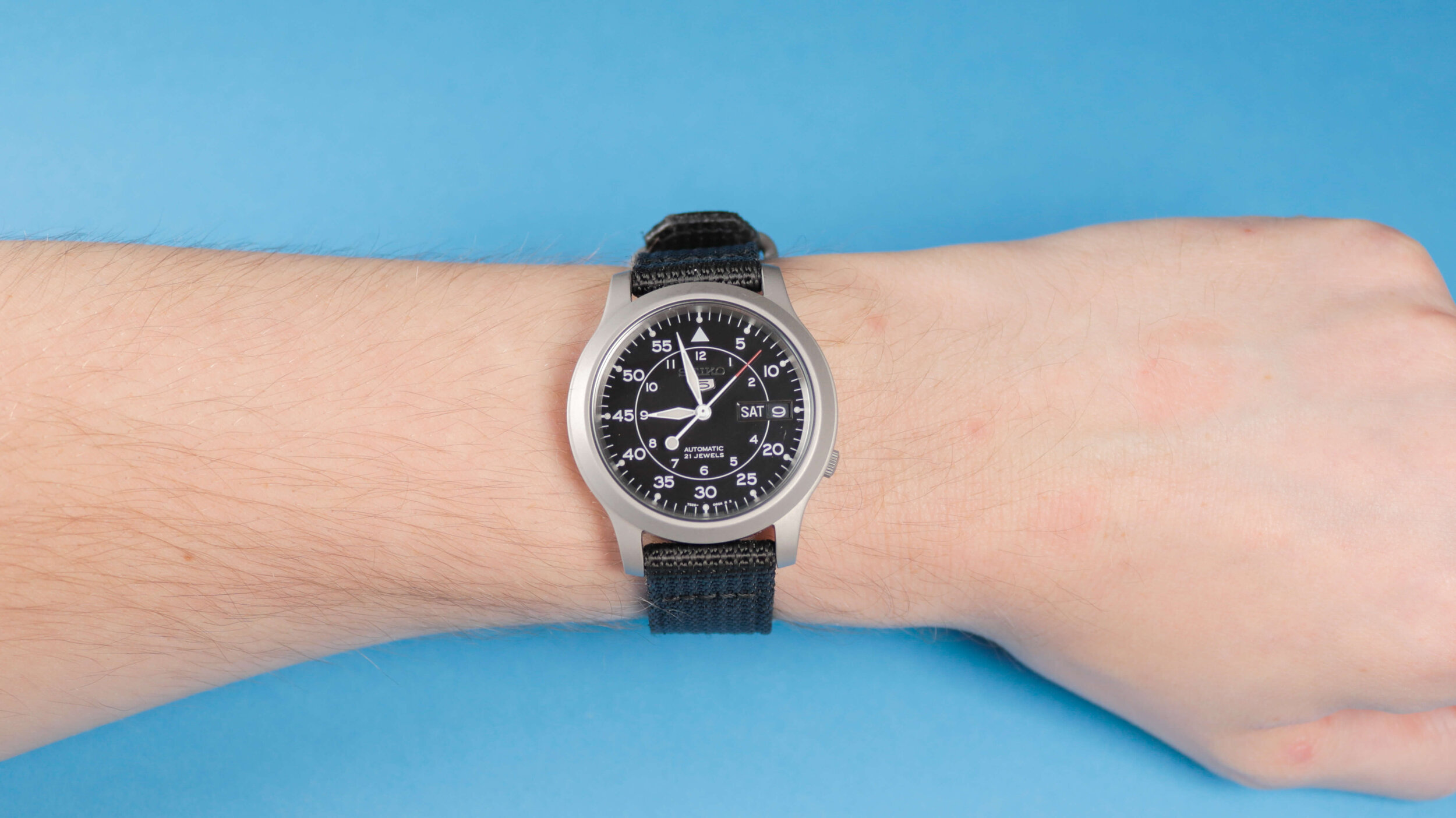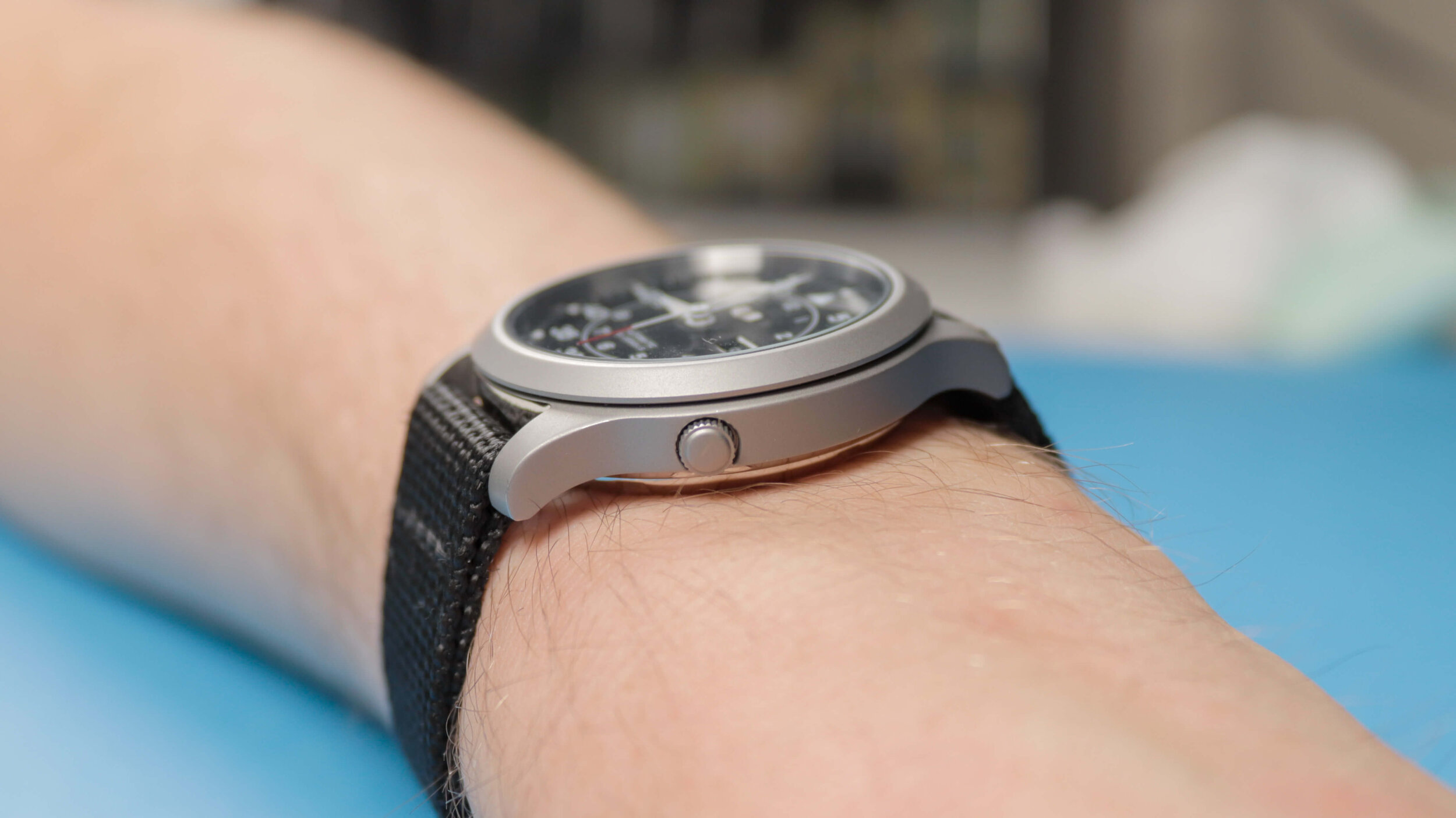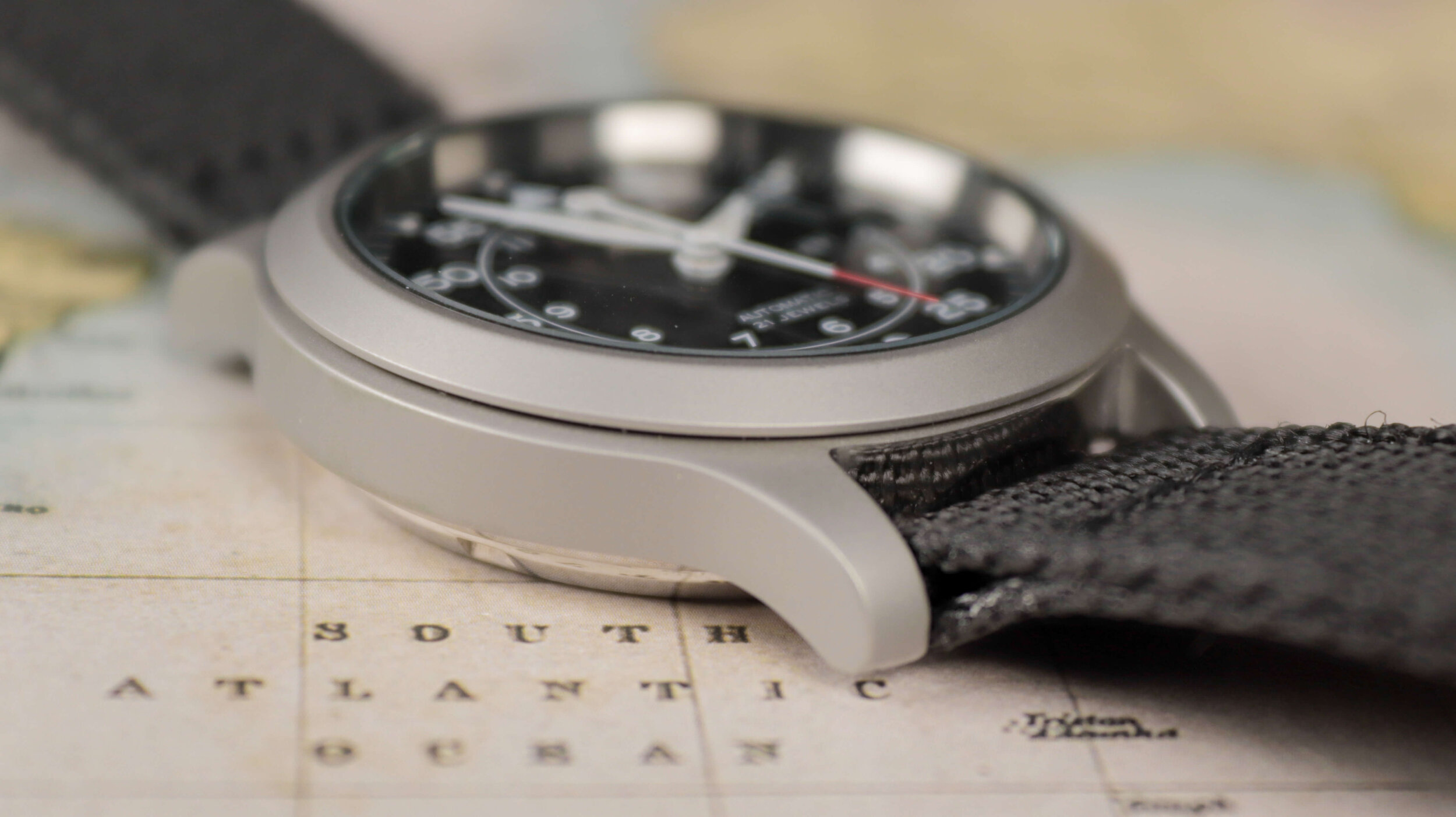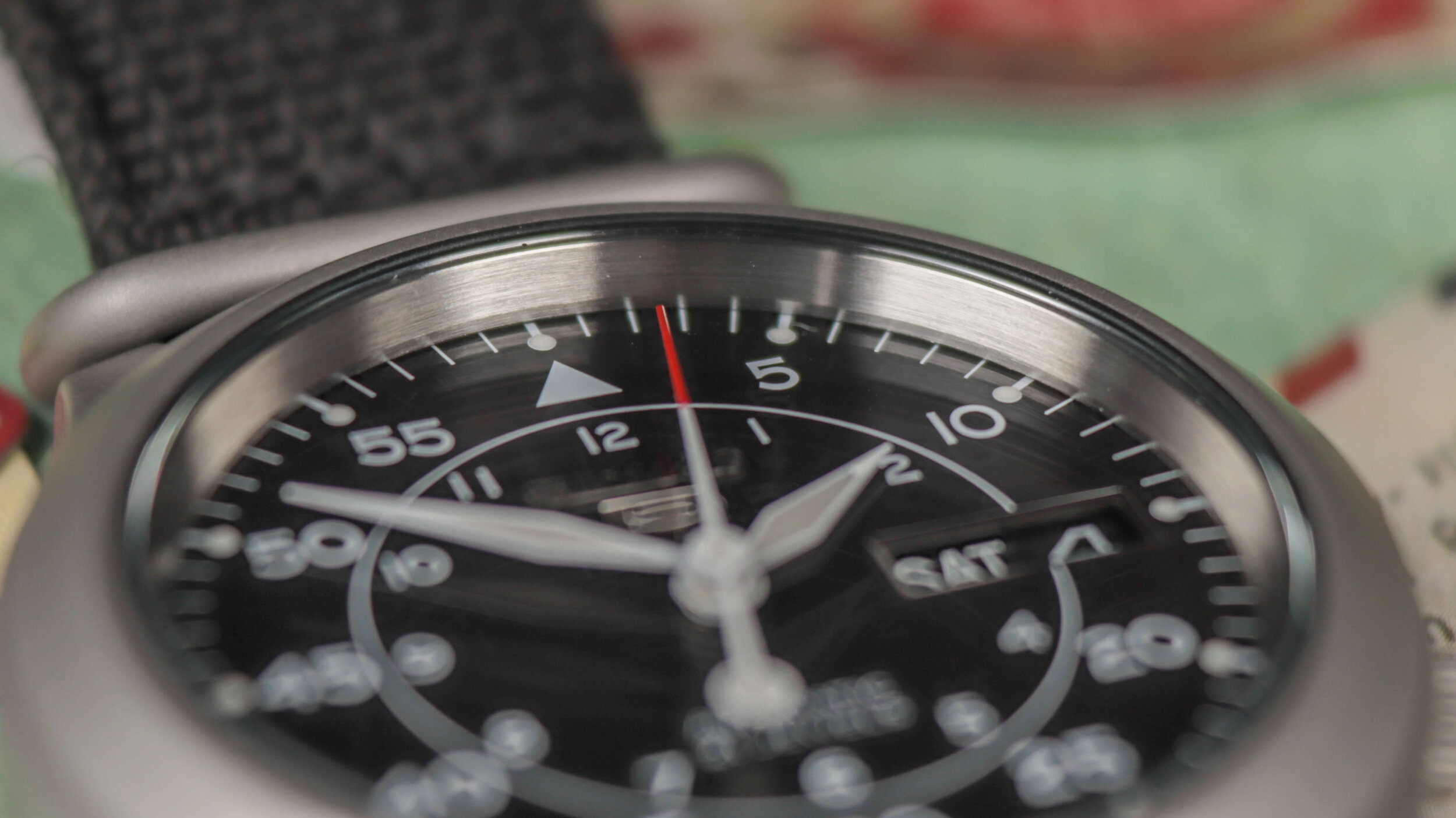Seiko 5 Military Watch Review (SNK809) - How This Watch Gets You Hooked
(This page features affiliate links, for more information on them click here.)
When it comes to getting newbies into the hobby of watch collecting, I can’t think of many pieces that surpass the Seiko SNK809. This incredibly affordable mechanical military field watch has been a best-seller for many years and holds a dear place in many men's hearts.
While this classic Seiko 5 has some obvious flaws, it is generally considered a top-tier gateway watch; today we’re going to find out why.
Introduced in the mid-2000s, the SNK800 series replaced the smaller, ageing SNX and SKX 400 series of similarly styled field watches. While the size did increase, it didn’t substantially. This SNK809 has some really compact dimensions by today’s standards, at a fraction over 37mm wide, 10.7mm deep and a short lug to lug of just 42.9mm.
Size
As with other models in the Seiko 5 range, this is a great fit for average to small wrists. It never gets in the way, just as a field watch shouldn’t. With small watches becoming an endangered species these days, I’m unsurprised that so many people enjoy finding a watch with these proportions. I have to admit, I still prefer the slimline cases present on other quartz field watches but given the mechanical movement, it’s understandable.
Watch Case
The majority of the 316L stainless steel case features a heavily blasted matte finish, giving the watch a titanium-esque look and feel. The bezel sits atop the main body with a shallow slit around the perimeter, which doesn’t breach through to the internals. The look is maintained by the similarly finished crown, that tucks in to give a strikingly symmetrical look. Positioned at the 4 o’clock position, it won’t dig into your wrist nearly as much as a standard
Unfortunately, the blasted finish stops there. From a 90-degree angle you can see the polished finish that inhabits the area between the lugs, along with that on the case rear. This is disappointing, though not greatly visible on-wrist. Given the implementation, I’m inclined to think it’s for cost-cutting reasons, rather than aesthetics.
Performance
The second niggle and arguably the weakest point of the watch is the water performance. While I wouldn’t expect a military field watch to perform as well as a diver, the notched case-back on the SNK809 only provides 30m of water resistance. While on paper this may sound impressive, in practice the watch is splash-proof, rather than repeatedly submergible. This is somewhat disappointing and could well shift its purpose from a true practical field watch to more of a field-style watch, depending on your intended purpose. Even a slight upgrade to 5ATM would be very welcome.
Watch Movement
Nevertheless, there’s one key aspect of this watch that could make you look past those weaknesses. Visible through the exhibition case-back is that 21-Jewel Seiko 7S26 automatic movement, making this watch one of the most affordable ways to get on that mechanical ladder. While it’s far from the most exciting or feature-rich mechanism out there, it is reliable and accurate enough for general use and available in a price bracket that’s otherwise dominated by low-cost quartz pieces. In the US in particular, it’s still available for under $80, which is crazy. For a newcomer, I don’t think you can beat the magic and mystery of looking through the glass and seeing the springs and gears working away there, even if it’s just on a low-end watch like this.
Glass
Hardlex is also present over the dial. This is Seiko’s proprietary hardened mineral crystal, which is generally considered to be slightly more scratch-resistant than standard mineral glass, whilst not quite achieving the hardness of sapphire.
Dial
The dial is another area that adds to the appeal. While only a simple design, it has been executed to a high and tasteful standard for an £80 watch. This variant has a black dial, featuring high contrast white text; though there are other variants in the range including cream, blue and green. I have an affinity towards this dark one due to its versatility, along with the dark date wheel which blends in seamlessly with the rest of the dial; something I can’t quite say about the other models, which feature white windows at the 3 o’clock position. Even the font appears to be the same as the rest of the dial, which is a plus.
Outside of that, you have a fairly standard chapter ring, featuring relatively small numbers along with tiny lume pips that mark each hour. A slim white circle houses the rest of the text, including the applied Seiko logo at the typical central position, with the famous Seiko 5 shield placed immediately below it. I’m not normally a fan of the ‘5’ logo, though I’ll admit it looks quite good on this watch. It’s well-sized and suits the colourway rather nicely.
Another addition that fits the bill is the handset. These seems to be a cross between the stubbier alpha hands and smoother leaf hands, as they widen towards the centre and provide great legibility. Something about their shape complements the design of this military style watch, though I wish they were a fraction longer. Nevertheless, I love the second hand, which features a large, lumed lollipop as the counterweight and a red streak towards the tip. This adds a flash of colour, which works nicely with the date window when it ticks over to a Sunday, also displayed in the same red.
Watch Strap
So far, we’ve discussed several characteristics that are commonplace among many Seiko 5 watches. After all, they were originally designed with an automatic movement, water resistance, day/date complication and a 4’oclock crown in mind. However, along with a durable case, a hard-wearing strap was also one of their parameters.
While you can get certain SNK800 watches with steel bracelets, the majority come fitted with a 2-piece fabric strap like this one. For me, it just makes sense on a field watch and Seiko have a pretty bad reputation for their low-end bracelets anyway, so how does this strap hold up?
Well, my first impressions have been positive. It has a blasted, signed buckle and matte keepers that closely match the finish of the case. The material itself is thick and double-layered, with a reinforced section around the holes to boot, which is a nice addition. These have a mixed reputation online and it could be because of the way they interact with some materials. My nylon watch gloves, for example, pull extremely badly when handling this, though I can’t say I’ve had similar issues with regular items of clothing. While this strap should be durable, I think the watch looks better on alternative leather choices. A quick google search will reveal a ton of options worth investigating.
IS THE SEIKO SNK809 WORTH IT?
It’s funny because I think this is a better watch, whilst also being a worse field watch, than some of the quartz Lorus’ I reviewed earlier in the year. Currently, the SNK809 stands out because there isn’t a great deal of mechanical competition, with the next rival offering being the larger and more expensive SNZ series from the same brand. Maybe others just can’t compete at such a low price point?


